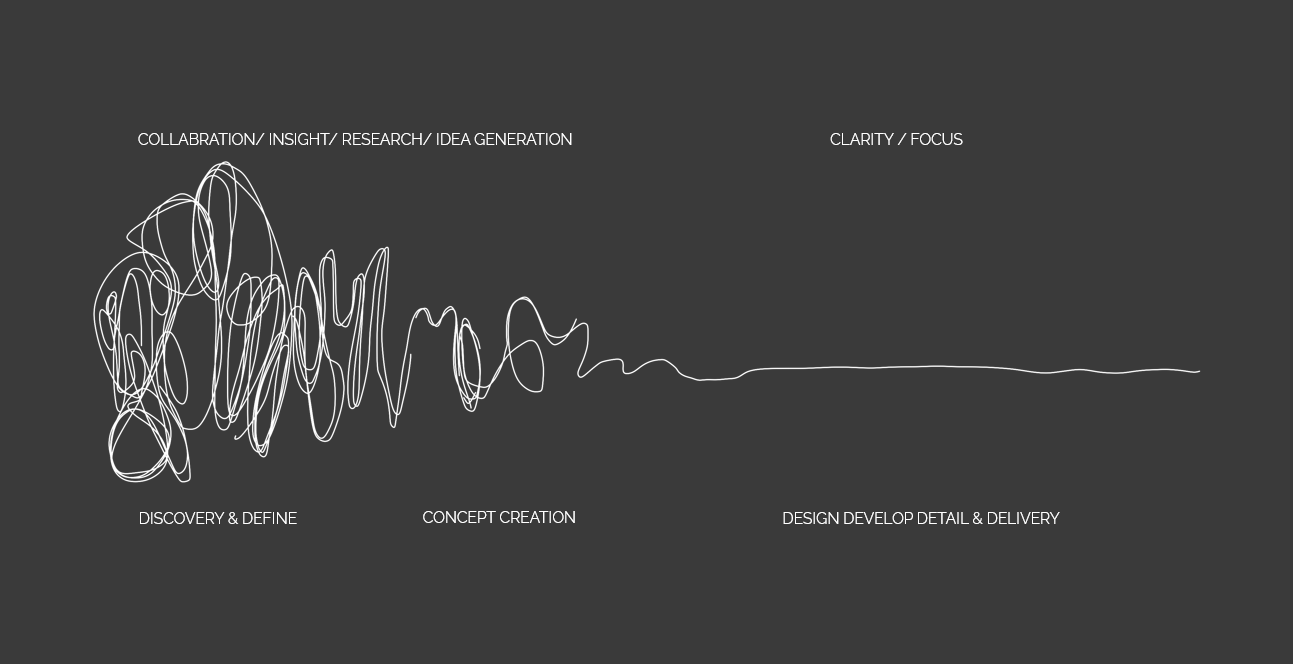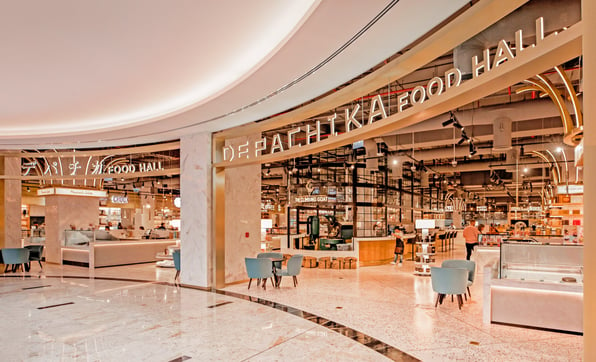Creativity is often described as a sudden spark of inspiration. But it’s not that simple. It’s not about waiting—it’s about working together in our creative teams, having workshops and creative check-ins to truly test individual ideas.
Working together allows us to transform ideas into something meaningful—to make a restaurant, a food hall, a hotel, or an RDE master plan become a truly unique customer experience.
The power of creativity is enhanced by the collaboration of ‘creatives.’
Working closely with our clients to understand the needs and wants of the customer gives us those unique moments to create both commercial success and a real impact in the market.
Having a creative process that allows for the chaos of free-ranging thinking and idea generation, followed by navigating and testing ideas through customer scenarios, ultimately hones the outcome.
At TGP, creativity is more than a single flash of brilliance—it’s a culture.
It’s reflected in the way our teams connect, in our openness to new perspectives, and in the belief that the best ideas don’t belong to just one person—they’re built together.
We sat down with Gabriel Murray, Creative Director at TGP, to explore how creativity unfolds, the challenges that come with it, and the little moments that often make all the difference. With decades of experience, including his work at Fitch, now Landor, and as an independent creative strategist, Gabriel has been instrumental in shaping some of the most innovative creative solutions in the industry.
1. How do you approach creative ideas in your work?

Creativity can’t happen in a vacuum. It’s not about waiting for that one perfect idea to land in your lap.
I believe that creativity is more than just designing—although we design some great things. It’s about understanding issues and making a difference, whether by creating a better experience or a moment that enhances and lifts the spirit! It’s about crafting a space, an interior, or a brand that customers feel a part of and want to belong to.
We are lucky—we have a team of real hospitality, restaurant, and bar experts who come together to fully explore ideas.
Our creative teams are built around branding, advisory, and design specialists who collaborate on projects to ensure that our final solution is effective and successful against the criteria established in the strategy and brief.
Initial thoughts are nurtured and developed through team discussions, allowing concepts to grow and improve.
Our diverse team members bring unique insights, leading to unexpected breakthroughs and innovative solutions—an opinion on design metaphors, a thought on color. An idea develops, and with further collaboration and exploration, it can become exceptional.
At TGP, the creative process isn’t linear at all. It’s often chaotic—like a tangled squiggly line that gradually unweaves to become one single, fully thought-out idea.
It’s also about paying attention to the little things, being curious, and letting ideas naturally develop within the project constraints.
The initial stages involve free-ranging thinking and idea generation—these ideas are then tested, navigated, and refined through customer scenarios.
The best ideas emerge from many voices coming together. A designer might spot something not quite right in the flow of a space that someone in concept development wouldn’t notice. A branding specialist might pull in a reference that suddenly changes the entire tone of a project. Creativity thrives when ideas are shared, discussed, and nurtured.
2. How does creativity play out in your daily work?

True creativity requires space—not just time, but the right mindset. The effectiveness of creativity lies in achieving great solutions within constraints—whether it’s tight timeframes, restricted budgets, or unusual spaces. Sometimes, we must put on our ‘creative boosters,’ using our creative intelligence efficiently to make the best use of time and resources while achieving world-class solutions.
This is where true creativity kicks in—working as a team enables us to quickly test ideas against customer demands and market opportunities. We can then establish a joint vision and assess its effectiveness against the brief and proposition.
At TGP, the creative lead owns the delivery and design direction, ensuring cooperation between teams so that the final outcome is both aesthetically wonderful and engaging to the customer.
I am honored to be working with—and so proud of—the TGP team. We love socializing and sharing ideas. We all understand that the first idea is only the beginning of the creative journey to real success. It’s like the first step on a wonderful adventure full of stimulation and exploration.
At TGP, we embrace three key principles to nurture creativity:
Collaboration
We ensure that different areas of expertise are represented on projects. The best ideas rarely emerge in isolation.
Experimentation
We encourage testing, questioning, playing with ideas, and exploring where those ideas might lead.
Adaptability
Creativity is rarely a straight line. Sometimes, the best solutions are the ones you didn’t expect.
Creativity isn’t about perfection. Some days, it flows effortlessly; other days, not so much. What matters is creating an environment where people feel free to explore, stimulate others, challenge ideas, and stay open to whatever the process brings.
3. What are some of the challenges that come with creativity?

Knowing when to let go. As described earlier, creativity is not a linear process—ideas need to be socialized and tested through critique and adaptive thinking.
We can all fall in love with our ideas—sometimes even trying to make them fit when they don’t. That’s when you need the courage to step back and admit that the idea, no matter how much you’ve invested in it, isn’t working.
Moving on is the hardest thing to do, but it’s part of the creative journey. However, there’s value in the learnings—it leads you closer to the solution.
Creativity is about evolving, being new, being first to market. That’s why we constantly ask, “What about doing it this way?” As creatives, we keep things fresh and continuously push ourselves—not just for our clients and customers, but for our own growth.
Lastly, there’s the challenge of making creativity practical. A great idea is only great if it works in the real world—if it’s feasible, resonates with customers, and meets the established success criteria.
4. How do you know when an idea is working?

A great idea is never forced. It should feel natural, like it was always meant to be there—but with a striking difference.
It’s rewarding when you see and hear the response from customers directly or through social media.
Being present, observing how people react—how they pause, engage, how a space makes them feel, or how a brand sticks in their minds long after they’ve encountered it—is invaluable.
5. What makes creativity at TGP different?
-1.jpg?width=7360&height=4912&name=KKK_3569%20(1)-1.jpg)
Creativity at TGP is all about collaboration and shared growth. It’s not about one person coming up with a ‘big idea’—it’s about how an idea evolves through shared input, how different minds shape it into something stronger through testing and development.
Whether we’re creating a restaurant design, a food hall experience, an F&B master plan, or a brand identity, we don’t just focus on aesthetics—we think about customer feelings and engagement. What are the emotional touchpoints? These are the moments we want to create.
I believe that our creativity isn’t just about making things beautiful. It’s about making them truly meaningful—and, of course, making a difference.
-1.png?width=3330&height=698&name=TGP%20International%20Logo%20White%20(1)-1.png)



